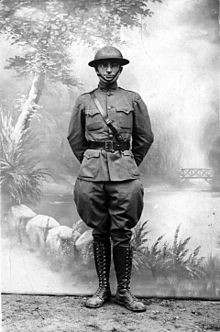The tulip originated in Central Asia and Turkey on the banks of the Bosphorus.
Cultivation of the tulip began in Persia, probably in the 10th century.
Its name comes from the Persian delband meaning "turban." The Turks called it so because they recognized a close resemblance between the shape of their turban and the flower.
Numerous types of tulips were cultivated and bred in the Ottoman Empire. They did not come to the attention of the West until the sixteenth century, when Western diplomats to the Ottoman court observed and reported on them.
When tulips became a prized item at the court of Henry IV of France, rare bulbs commanded a high price - one was traded for a brewery worth 30,000 francs.
Tulips were introduced into United Provinces (now the Netherlands) - from Turkey - in the sixteenth century. The Dutch then took such a fancy to them that they planted tulips all over the country, developing a wealth of new varieties. This led to the misconception that the tulip is Dutch.
The contract prices of rare tulip bulbs in the Dutch Republic kept climbing and by early 1637 they had reached the equivalent of 15 years' salary for just one bulb.
On February 3, 1637, the contract prices of rare tulip bulbs in the Dutch Republic abruptly collapsed, leaving many traders bankrupt.
It is believed the first tulips in the United States were grown by Richard Sullivan Fay in Lynn and Salem, Massachusetts in the mid 19th century. Fay imported many different plants from all parts of the world and planted them among the meadows of his estate.
During the Second World War, a teenage Audrey Hepburn survived in occupied Utrecht, in the Netherlands on a diet of turnips and tulip bulbs.
As thanks for their assistance in World War II, the Dutch cross-bred a species of tulip to resemble the Canadian flag. They now send 20,000 of these tulips to Canada annually as a sign of gratitude for all the aid they provided.
Tulips are today popular throughout the world, both as ornamental garden plants and as cut flowers.
The tulip is today cultivated on a large scale in the Netherlands. The country produces as many as 3 billion bulbs annually, the majority for export.
The tulip is the national flower of Afghanistan.
There are over 3,000 varieties of tulips, which are divided into fifteen groups, mostly based on the flower type, size and blooming period of the tulip.
 |
| Pixabay |
Its name comes from the Persian delband meaning "turban." The Turks called it so because they recognized a close resemblance between the shape of their turban and the flower.
Numerous types of tulips were cultivated and bred in the Ottoman Empire. They did not come to the attention of the West until the sixteenth century, when Western diplomats to the Ottoman court observed and reported on them.
When tulips became a prized item at the court of Henry IV of France, rare bulbs commanded a high price - one was traded for a brewery worth 30,000 francs.
Tulips were introduced into United Provinces (now the Netherlands) - from Turkey - in the sixteenth century. The Dutch then took such a fancy to them that they planted tulips all over the country, developing a wealth of new varieties. This led to the misconception that the tulip is Dutch.
The contract prices of rare tulip bulbs in the Dutch Republic kept climbing and by early 1637 they had reached the equivalent of 15 years' salary for just one bulb.
On February 3, 1637, the contract prices of rare tulip bulbs in the Dutch Republic abruptly collapsed, leaving many traders bankrupt.
 |
| A tulip, known as "the Viceroy" (viseroij), displayed in the 1637 Dutch catalog. |
It is believed the first tulips in the United States were grown by Richard Sullivan Fay in Lynn and Salem, Massachusetts in the mid 19th century. Fay imported many different plants from all parts of the world and planted them among the meadows of his estate.
During the Second World War, a teenage Audrey Hepburn survived in occupied Utrecht, in the Netherlands on a diet of turnips and tulip bulbs.
As thanks for their assistance in World War II, the Dutch cross-bred a species of tulip to resemble the Canadian flag. They now send 20,000 of these tulips to Canada annually as a sign of gratitude for all the aid they provided.
Tulips are today popular throughout the world, both as ornamental garden plants and as cut flowers.
The tulip is today cultivated on a large scale in the Netherlands. The country produces as many as 3 billion bulbs annually, the majority for export.
 |
| Tulip cultivation in the Netherlands. By Alessandro Vecchi |
The tulip is the national flower of Afghanistan.
There are over 3,000 varieties of tulips, which are divided into fifteen groups, mostly based on the flower type, size and blooming period of the tulip.






























